I enjoy the lighthearted and ridiculous, especially the obviously tacky. I adore the vibrant and brilliant fashion. You know, I enjoy it when it is too much to handle. That’s why camp movies like “But I’m a Cheerleader” have a particular place in my heart; they embrace ridiculousness with open arms and showcase their overdone aesthetics with great pleasure.
From Jamie Babbit’s cotton-candy colored conversion therapy satire to John Waters’ purposely extreme works, these movies remind us that occasionally the most potent messages come packaged in the most absurd packaging. That’s just the point—let’s enter this realm of willful artifice, where everything is heightened, nothing is subtle, and that is exactly what is meant.
Highlight
Queer Stories with Camp Sensibilities
Like “But I’m a Cheerleader,” these movies embrace camp aesthetics while fronting LGBTQ+ stories front and center:
The Adventures of Priscilla, Queen of the Desert (1994)
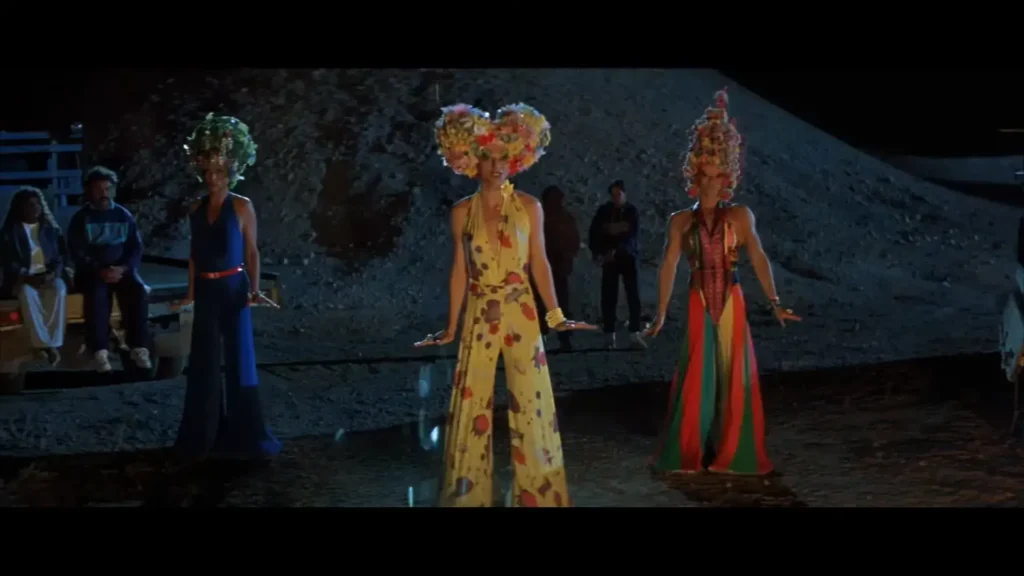
Release Year: 1994
Country: Australia
Where to Watch: Amazon Prime, Apple TV
Why It’s Like But I’m a Cheerleader: Both movies investigate authenticity and identity by use of vivid images. Whereas “Priscilla” celebrates gender nonconformism with flashy clothing, “Cheerleader” uses pastels to mock gender standards. Every movie tracks characters on paths toward self-acceptance in face of social pressure to fit conventional norms.
Two drag queens and a transsexual woman travel the Outback in a lavender bus called Priscilla in this Australian road trip movie. “Priscilla” presents the visual spectacular and emotional depth lovers of “But I’m a Cheerleader” will value with its Oscar-winning costumes, lavish performances, and sincere examination of finding family.
Happy Ending?: ☀️ Yes
🔍 Similar Recommendations:
Saved! (2004)
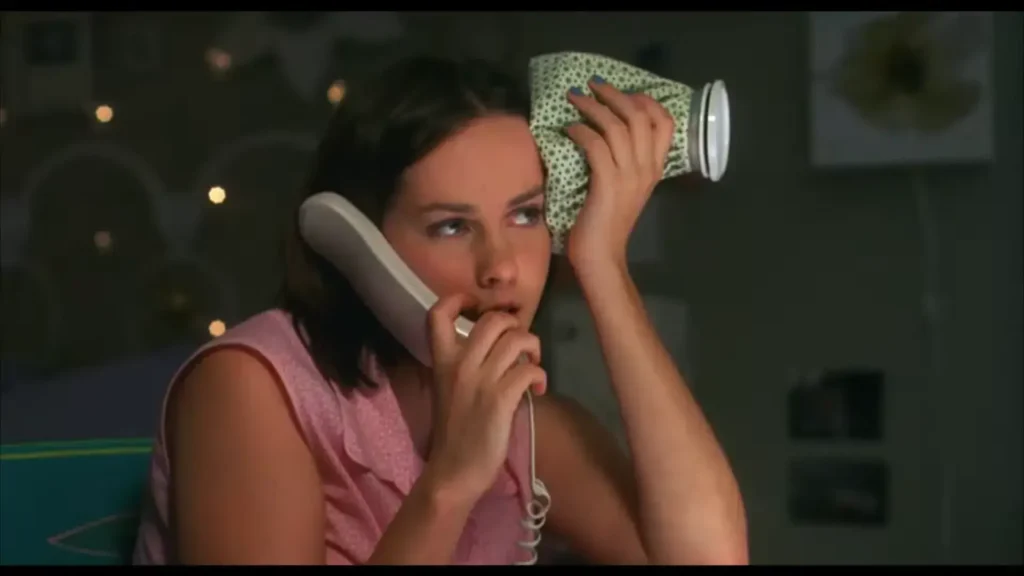
Release Year: 2004
Country: USA
Where to Watch: Amazon Prime
Why It’s Like But I’m a Cheerleader: With the same vivid irony, “Cheerleader” parodies conversion treatment while “Saved!” targets religious extremism. Both have heroes driven into limited surroundings who finally rebel against systems aiming to “correct” them. The movies tackle authoritative characters who enforce strict moral codes by means of absurd regulations and activities from a sarcastic standpoint.
Maybe the closest spiritual brother to “But I’m a Cheerleader,” this satire set at a Christian high school addresses religious fundamentalism using the same cutting wit. With LGBT characters and questions of acceptance and dogma explored, the film—which stars Mandy Moore and Jena Malone—wrapped in a vibrant high school environment questions conventional wisdom.
Happy Ending?: ☀️ Yes
🔍 Similar Recommendations:
Hairspray (1988)

Release Year: 1988
Country: USA
Where to Watch: Amazon
Why It’s Like But I’m a Cheerleader: Water’s subversive comedy directly affected Babbit’s direction on “Cheerleader.” Both directors purposely create artificial looks to address social concerns; Waters looks at racism while Babbit attacks homophobia. Though their subjects are distinct, their mutual use of camp as a vehicle for social commentary makes them artistic relatives.
Originally “Hairspray” by John Waters (before the Broadway adaption and 2007 remake), this is a flawless example of camp movie with LGBT sensibility. While concentrating on racial unification in Baltimore during the 1960s, the movie features Divine in drag as the mother of the protagonist and welcomes the exaggerated visuals that would later shape “But I’m a Cheerleader.”
Happy Ending?: ☀️ Yes
Cry-Baby (1990)
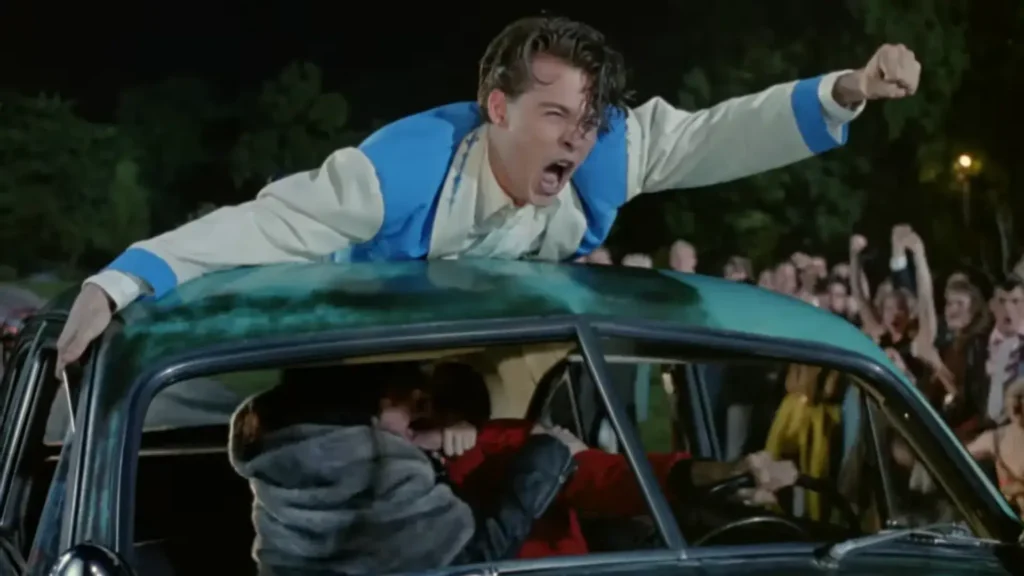
Release Year: 1990
Country: USA
Where to Watch: Peacock, Tubi
Why It’s Like But I’m a Cheerleader: Through deliberate fabrication and elevated actuality, both movies parodies conformity. Waters’ “drapes vs. squares” contrast fits “Cheerleader’s” strict gender roles. While their heroes violate arbitrary social bounds by acts of rebellion, they use sarcastic detachment to remark on society’s fixation with classifying people.
Another John Waters production, “Cry-Baby” stars Johnny Depp in a campy send-up of 1950s young delinquent movies. Although the primary romance is straight, Waters injects his trademark queer aesthetic and celebration of outsiders into the movie that speaks to “But I’m a Cheerleader’s” ideas of discovering your really self outside of social conventions.
Happy Ending?: ☀️ Yes
Satirical Teen Comedies with Visual Flair
These films share “But I’m a Cheerleader’s” vibrant visual style and satirical approach to social institutions, particularly high school hierarchies:
Jawbreaker (1999)
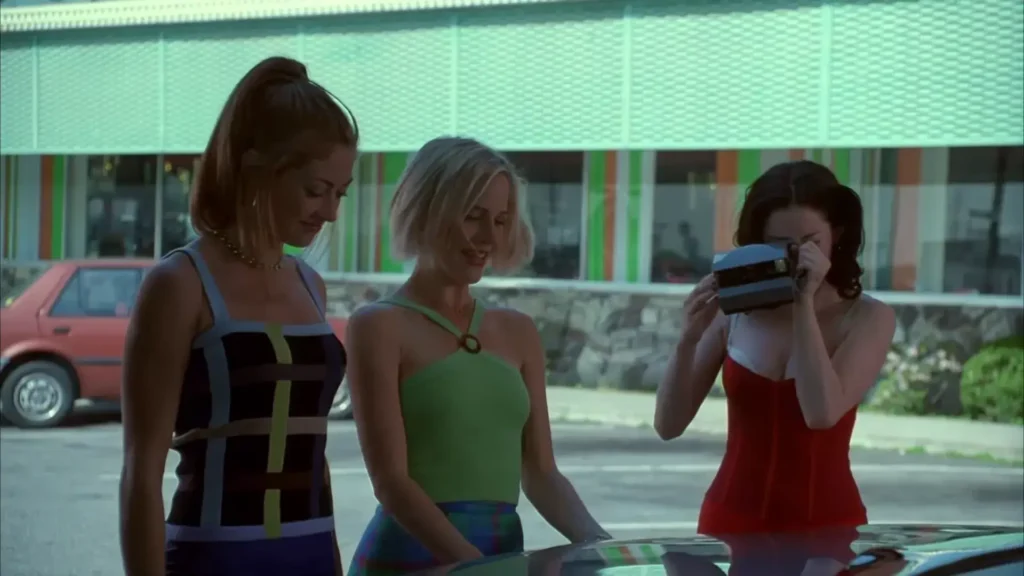
Release Year: 1999
Country: USA
Where to Watch: Netflix, Pluto TV
Why It’s Like But I’m a Cheerleader: Published the same year, these movies have a similar highly stylized look. Whereas “Jawbreaker” uses candy hues to emphasize the poisonous sweetness of high school popularity, “Cheerleader” uses pastels to parody gender normativity. Both directors design visually controlled environments that provide backgrounds for their social criticisms.
Published the same year “But I’m a Cheerleader,” “Jawbreaker” is a dark comedy about popular high school ladies who unintentionally kill their friend. Though its subject matter is different, Director Darren Stein crafts a hyper-saturated, highly stylized world that reflects the artistic approach of “But I’m a Cheerleader,” so making it the ideal companion piece.
Happy Ending?: ⛈️ No
Heathers (1989)
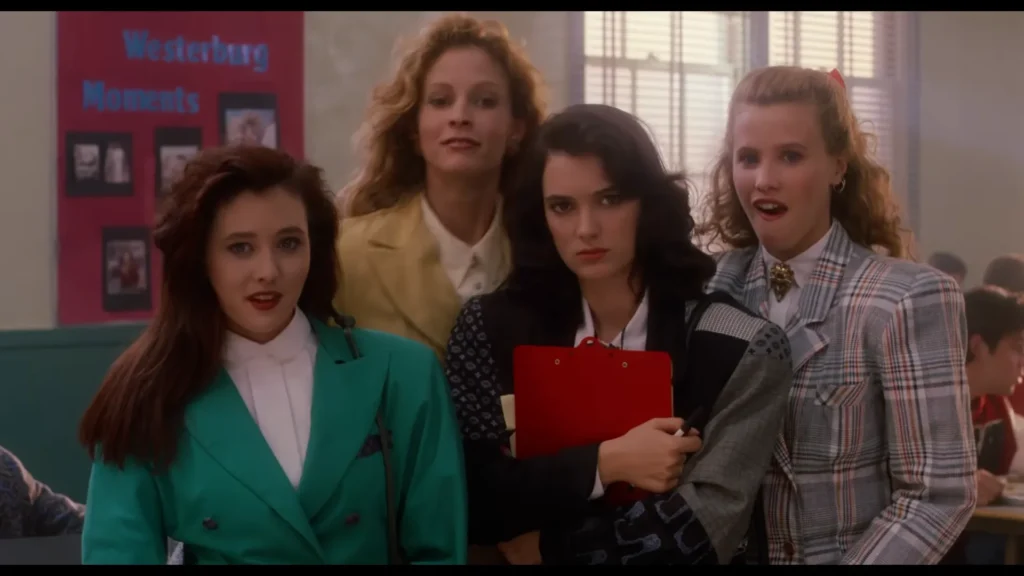
Release Year: 1989
Country: USA
Where to Watch: Hulu, Paramount+
Why It’s Like But I’m a Cheerleader: “Heathers” invented the stylized teen humor “Cheerleader” would subsequently adopt. Both movies focus on conformity and social control using overdone images (color-coded jackets in “Heathers,” pink/blue in “Cheerleader”). Their darkly comedic attitude to difficult subjects and heroes who finally reject the values of their repressive societal surroundings reflects each other.
Starring Winona Ryder and Christian Slater, this pitch-black comedy explores deadly outcomes from high school cliques. Its legendary style, quotable language, and outspoken mockery of teen social institutions set it as a spiritual forerunner of “But I’m a Cheerleader’s” overdone interpretation of society expectations.
Happy Ending?: ⛅️ Bittersweet
Clueless (1995)
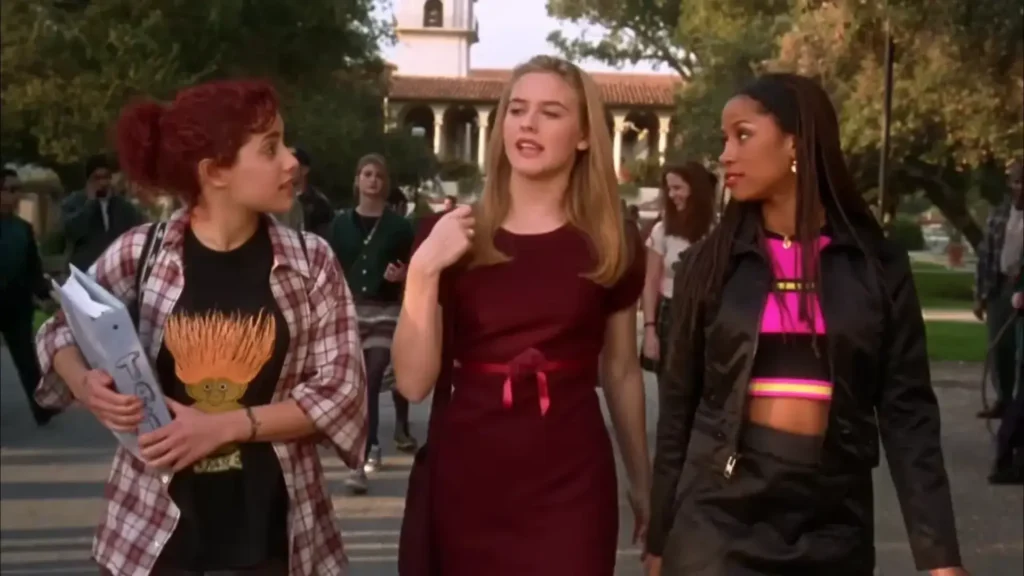
Release Year: 1995
Country: USA
Where to Watch: Max, Paramount+
Why It’s Like But I’m a Cheerleader: “Clueless” set the stylish teen look that “Cheerleader” would subsequently embrace. Both movies touch on social conditioning via the paths of its heroes; Cher’s ability to think beyond appearances matches Megan’s revelation of her sexuality. Despite sarcastic framing, their shared 90s sensibility combines underlying sweetnes with keen humor.
Modern interpretation of Jane Austen’s “Emma” by Amy Heckerling offers the same kind of color-saturated, fashion-forward look that “But I’m a Cheerleader” would subsequently embrace. “Clueless” has a similar visual language and loving contempt of societal structures, even if movie centers on the hardships of wealthy Beverly Hills youth rather than queer identity.
Happy Ending?: ☀️ Yes
Do Revenge (2022)
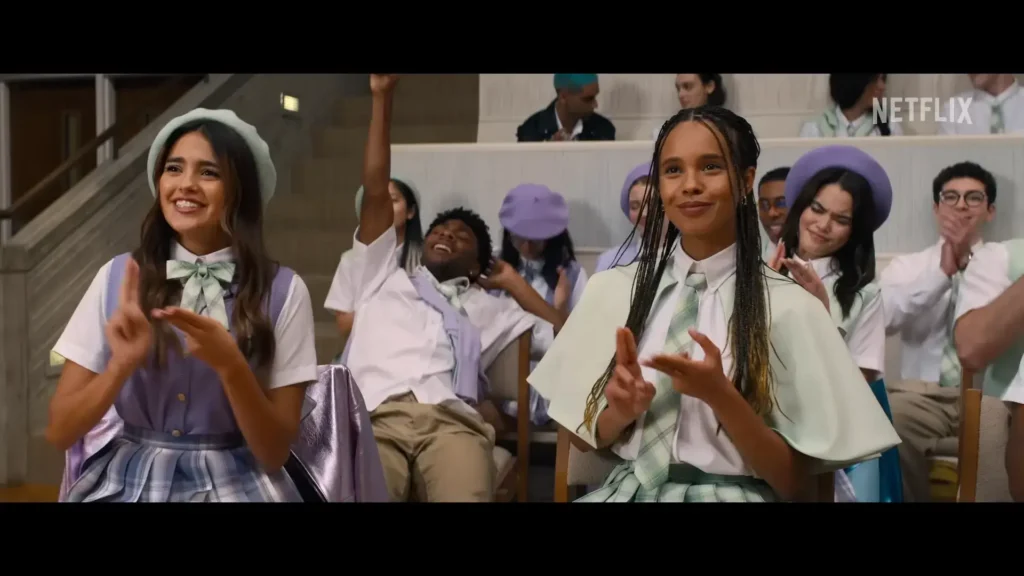
Release Year: 2022
Country: USA
Where to Watch: Netflix
Why It’s Like But I’m a Cheerleader: This contemporary successor reflects “Cheerleader’s” ongoing impact on stylish teenage film. Both movies depict environments with too strong social restrictions and construct meticulously managed color worlds (pastels reign both). While keeping its dedication to visual coherence and social commentary, “Do Revenge” changes “Cheerleader’s” method for the social media age.
Inspired by classics like “Heathers” and “Clueless,” this Netflix dark comedy, which more recently debuted, has a revenge storyline between two high schoolers. “Do Revenge” brings the stylized teen satire torch into the present with its carefully chosen color palette and LGBTQ+ character inclusion.
Happy Ending?: ⛅️ Bittersweet
Friendship-Focused Comedies with Camp Style
These films emphasize the journey of self-discovery and friendship, wrapped in delightful camp aesthetics:
Romy and Michele’s High School Reunion (1997)
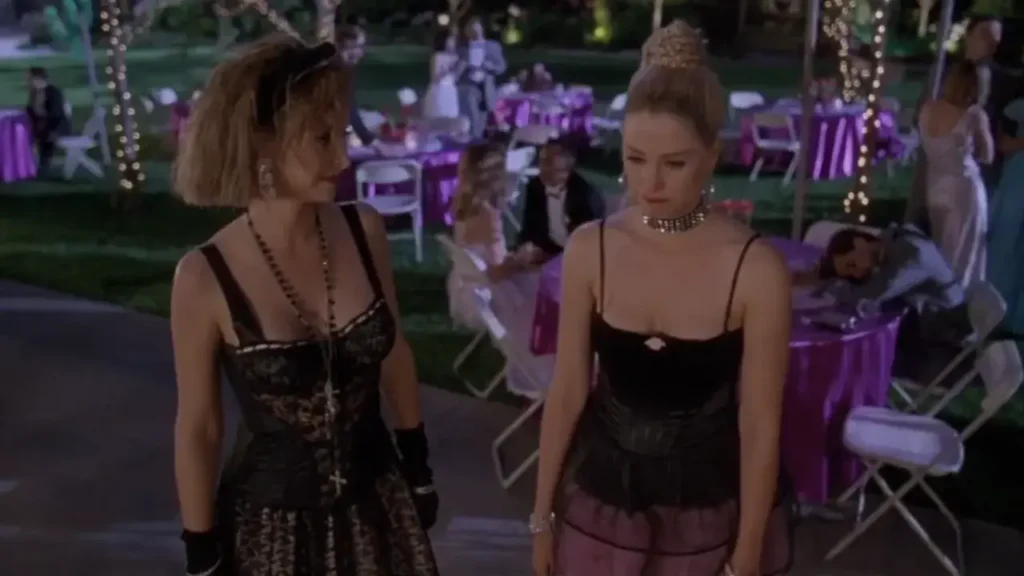
Release Year: 1997
Country: USA
Where to Watch: Disney+, Hulu
Why It’s Like But I’m a Cheerleader: Both movies look at authenticity in settings that call for uniformity. While “Romy and Michele” questions social status and achievement, “Cheerleader” looks at sexuality. Each has heroes who try to fit assigned roles before accepting their actual selves. Their shared 90s aesthetic blends vivid images with a shockingly emotional core under the comic.
Following two best friends who create elaborate stories for their high school reunion, this comedy starring Mira Sorvino and Lisa Kudrow combines the colorful wardrobe choices and celebration of authenticity that make “But I’m a Cheerleader” so appealing. Both movies eventually honor being true to yourself, even if that might be unusual.
Happy Ending?: ☀️ Yes
Wet Hot American Summer (2001)

Release Year: 2001
Country: USA
Where to Watch: Netflix
Why It’s Like But I’m a Cheerleader: The most obvious similarity is the camp environment: literal summer camp against conversion camp. Both movies use usually sincere settings and turn them into absurdist backgrounds. They are committed to unusual comedy, surprising romance, and establishments that unintentionally support the very activities they seek to stifle.
The ensemble cast of this parodies of summer camp films includes several upcoming stars. Though mostly centered on heterosexual characters, the movie features LGBT narratives and, like “But I’m a Cheerleader,” employs an institutional setting (summer camp instead of conversion treatment camp) as backdrop for comedy and self-discovery.
Happy Ending?: ☀️ Yes
Josie and the Pussycats (2001)
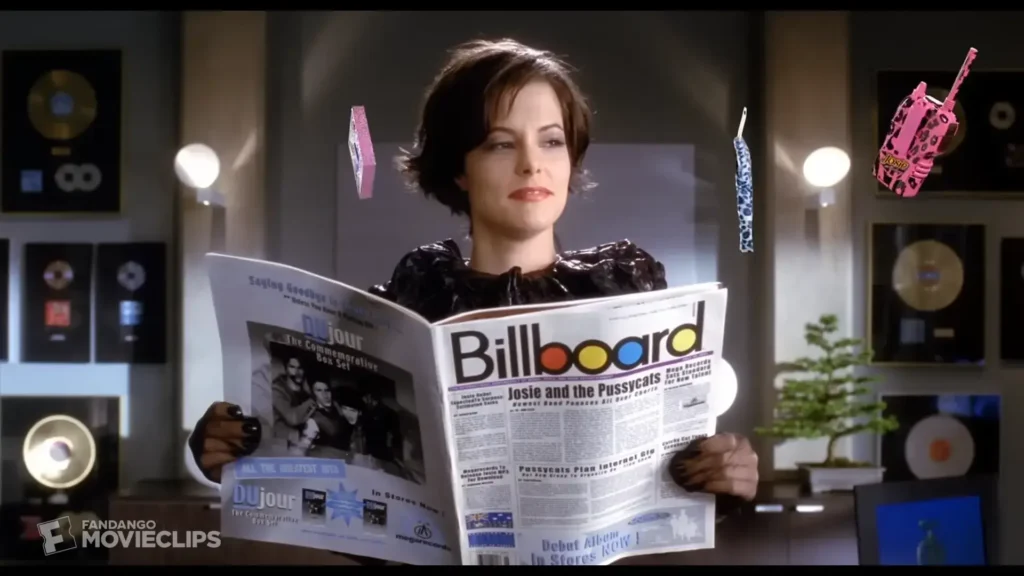
Release Year: 2001
Country: USA/Canada
Where to Watch: HBO Max
Why It’s Like But I’m a Cheerleader: Both movies attack systems of control by using overdone visual techniques. “Josie” parodies consumer capitalism and corporate manipulation; “Cheerleader” attacks gender enforcement. Each movie uses vivid colors and enhanced reality to hide harsh criticism under a pleasing aesthetic surface, therefore rendering their social commentary more palatable and entertaining.
Three buddies negotiating stardom and corporate manipulation comprise this parody of the music business and consumer culture. Though its focus is on the music business rather than sexual identity, the film’s brilliant look, feminist overtones, and critique of conformity mirror ideas found in “But I’m a Cheerleader.”
Happy Ending?: ☀️ Yes
Explore More Sapphic Content
👉 Also explore: Lesbian Movies | GL Series | Yuri Anime & Manga
💡 More Movies Like These
